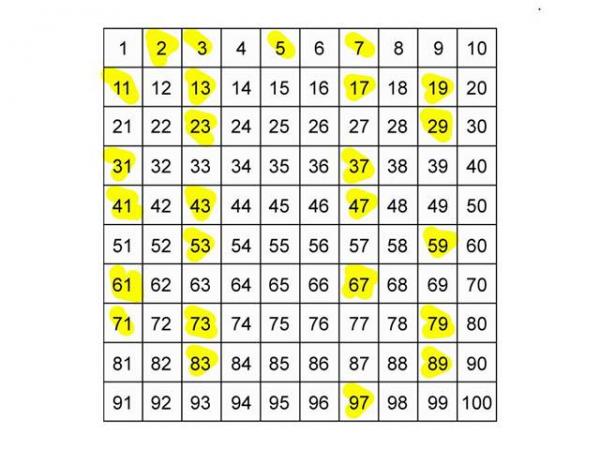In this post, we are going to learn how to factor into prime numbers.
First, let’s look at what factoring is: writing a number as the multiplication of other numbers.
For example, let’s factor the number 12.
12 = 3 x 4
12 = 2 x 6
12 = 1 x 12
All 3 cases are examples of factoring.
Now we are going to look at what a prime number is: those numbers that are only divisible by themselves and 1.
For example, 5 is a prime number because it is only divisible by 5 and 1. But 6 is not a prime number because it is divisible by 1, 2, 3, and 6.
Prime numbers table up to 100
Now you know what factoring is and what prime numbers are!
Factoring into prime numbers is writing any number as the multiplication of prime numbers.
For example, we are going to factor the number 36.
Let’s choose a prime number by which 36 is divisible, for example, 2.
36 ÷ 2 = 18
Now we divide 18 by another prime number.
18 ÷ 2 = 9
Now we divide 9.
9 ÷ 3 = 3
And finally we divide the 3, which is a prime number, so we can only divide it by itself.
3 ÷ 3 = 1
So 36, when factored into prime factors looks like this: 2 x 2 x 3 x 3
We can also write the factors in the form of powers so that the 2 is multiplied twice and the 3 is multiplied twice: 36 = 2 2 x 3 2
If you want to learn more about prime numbers and factoring, check the posts below:
- Prime Numbers and composite numbers
- Prime Numbers activities with Smartick
- Factorization: What Is It and How Is It Done?
To keep learning, you can sign up at Smartick and learn more elementary math every day!
Learn More:
- Prime Numbers Activities with Smartick
- Review Factoring with Examples
- Factorization: What Is It and How Is It Done?
- Follow 8 Easy Steps to Factor a Number
- Explanation of the Formula to Calculate the Least Common Multiple







